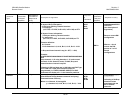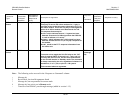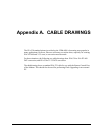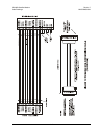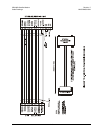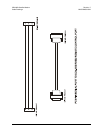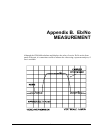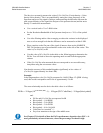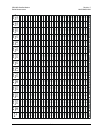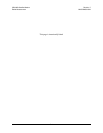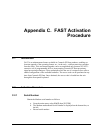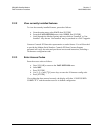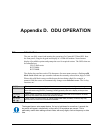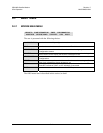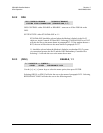
CDM-600 Satellite Modem Revision 7
Eb/No Measurement MN/CDM600.IOM
B–2
The idea is to accurately measure the value of (Co+No)/No, (Carrier density + Noise
density/Noise density). This is accomplished by tuning the center frequency of the
Spectrum analyzer to the signal of interest, and measuring the difference between the
peak spectral density of the signal (the flat part of the spectrum shown) and the noise
density. To make this measurement:
• Use a vertical scale of 1 or 2 dB/division.
• Set the Resolution Bandwidth of the Spectrum Analyzer to < 20 % of the symbol
rate.
• Use video filtering and/or video averaging to reduce the variance in the displayed
trace to a low enough level that the difference can be measured to within 0.2dB.
• Place a marker on the flat part of the signal of interest, then use the MARKER
DELTA function to put a second marker on the noise to the side of the carrier. This
value is (Co+No)/No, in dB.
• Use this value of (Co+No)/No in the table on the following page to determine the
Eb/No. You will need to know the operating mode to read from the appropriate
column.
• If the (Co+No)/No value measured does not correspond to an exact table entry,
interpolate using the two nearest values.
Note that the accuracy of this method degrades significantly at low values of
(Co+No)/No (approximately less than 6 dB).
Example:
In the diagram above, the (Co+No)/No measured is 4.6 dB. If Rate 1/2 QPSK is being
used, this would correspond to an Eb/No of approximately 2.6 dB.
The exact relationship used to derive the table values is as follows:
Eb/No = 10 log
10
(10
(Co+No/No )/10)
-1) - 10 log
10
(FEC Code Rate) - 10 log
10
(bits/symbol)
and:
• Eb/No and (Co+No)/No are expressed in dB
• Bits/symbol = 1 for BPSK
• Bits/symbol = 2 for QPSK
• Bits/symbol = 3 for 8-PSK
• Bits/symbol = 4 for 16-QAM
• Code Rate for ‘uncoded’ = 1
• Pay close attention to the sign of the middle term
See Chapter 13 for details of how the Eb/No performance degrades when ESC++ is
used, particularly at lower data rates, where the percentage overhead is high.
IMPORTANT



